(1) VUV photoionization mass spectrometry
VUV photoionization is one of the most efficient soft ionization method. Due to near-threshold ionization, nearly all the compounds with an IP lower than the photon energy of corresponding light source can be ionized. Thus, complex compounds can be distinguished in the same mass spectrum. Even isomers can be identifed by tunable synchrotron VUV light.
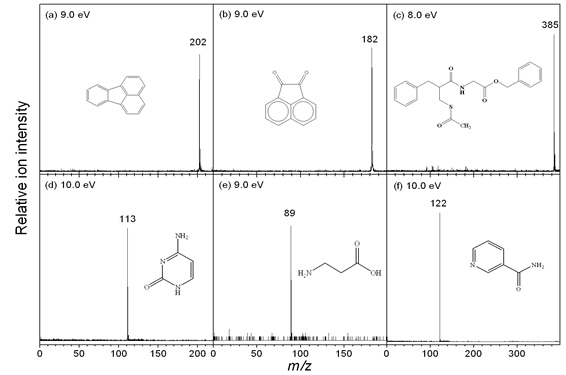
We mainly use the VUV radiation (U14C beamline and endstation) from the synchrotron light source in Hefei (Hefei Ligh Source). The radiation from an udulator of the 800 MeV electron strorage ring is monochromatized with a 1m Seya-Nomioka monochromator equipped with a laminar grating (1500 grooves/mm, Horiba Jobin Yvon). This grating covers the photon energy from 7.8-24 eV with a resolving power of 1000. The average photon flux is measured to be around 10E13 photons/s.
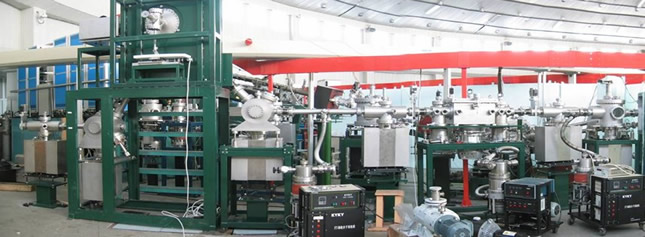
In addition, a homemade VUV discharge lamp filled with krypton is utilized, which is drived by a RF power supply. Moreover, a portable commercial available VUV lamp with DC power supply is also used.

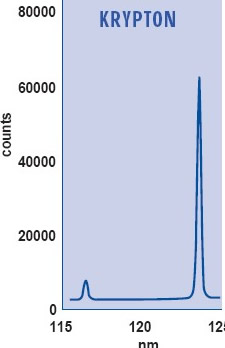
We are trying to develop advanced methods and strategies to improve the sensitivity and resolution of our apparatus, and expand the range of VUV photoionization-based analytical methods.
(2) Identification of complex organic mixtures
The characterisation of the organic molecular structures of complex mixtures, such as
natural products and oils, is a big challenge because of their complicated physical and
chemical properties. Typically, preliminary gas/liquid chromatographic separation is
implemented before the mass spectrometric analysis. To obtain reliable results, complex pretreatment and derivatisation are crucial. Recently, we use IR laser desorption combined with synchrotron VUV photoionization TOF mass spectrometric method to study complex mixture, which is proved to be a complementary tool for the identification of condensed chemical mixture. As can be seen, five peaks of six quinones are detected at the photon energy of 9.5 eV, and even isomers 9,10-anthraquinone and 9,10-phenanthroquinone with different IE values can be distinguished by scanning photoionization efficiency curves. Moreover, we have investigated a more complex sample--heavy oil, and found a series of saturated hydrocarbons: chains and cyclic compounds.
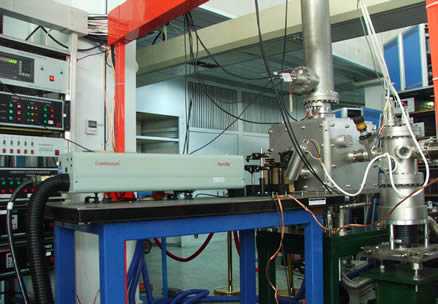


Another work is the characterization of complex gas mixtures, such as cigarette smoke. Conventional smoke analysis is mostly done with off-line techniques such as GC and LC methods, using the smoke collected from the puffs of cigarette. However, to observe the highly dynamic processes in the gas phase, a quick method with much smaller time scale is required. Here, we use photoionization/molecular beam mass spectrometry to analyze the components in real time. Many smoke products can be found immediately after the introduction of mainstream smoke.


(3) Instrumentation and new methods
Currently used synchrotron-based photoionization mass spectrometry introduces gas phase samples into the high vacuum chamber before photoionization study. This method is not suitable for nonvolatile and trace samples, especially for the analysis of drugs, natural products, metabolites and biomolecules. Now, we are constructing an atmosphere-mass spectrometer interface, i.e. an ion guide, which is used to introduce the ions produced at relatively high pressure to the high vacuum mass spectrometer. We can greatly improve the sensitivity and mass resolution by using such a ion guide.
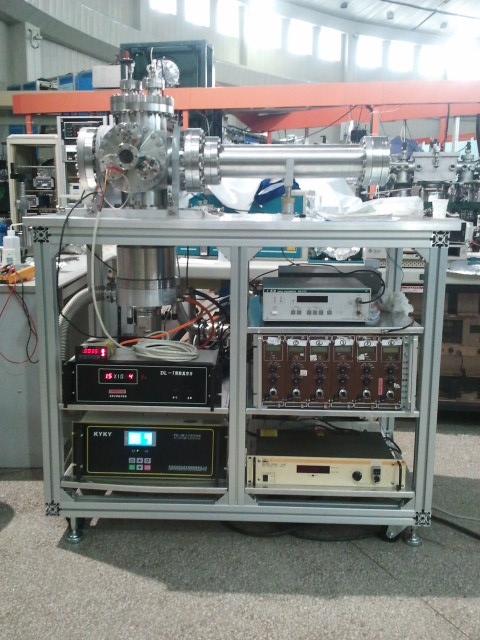

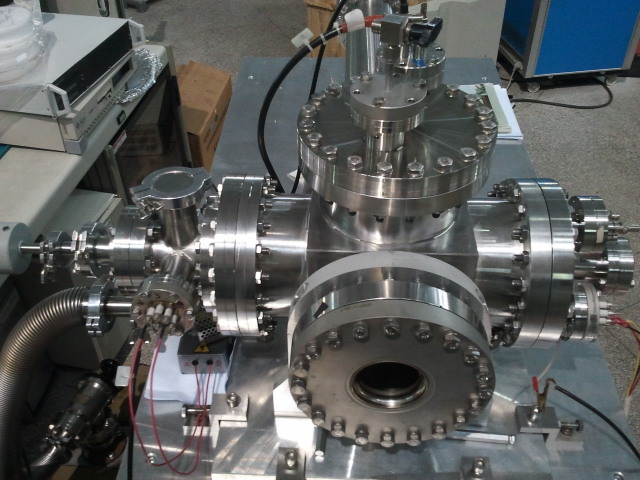
(4) Chemistry of ions in the gas phase
The importance of photoinduced ionization and dissociation of organic molecules has been recognized for several decades. However, introducing
nonvolatile and thermally labile compounds into the gas phase in an ionization
chamber under high vacuum is still a great challenge. We investigate the photoionisation and photodissociation of a series of
nonvolatile organic molecules using IR laser desorption combined with tunable
synchrotron vacuum ultraviolet photoionisation mass spectrometry. The fundamental
fragmentation pathways of these compounds can be deduced from mass spectra and theoretical calculations.


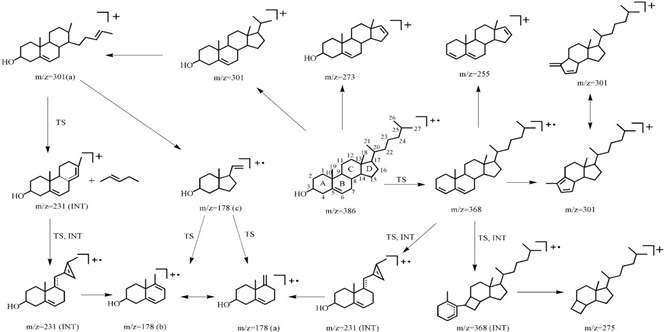
(5) Synchrotron VUV circular dichroism spectroscopy
Cirlular dichroism (CD) spectroscopy is a well-known method in biological chemistry and structural biology. Conventional CD instruments use the low flux light source in the UV and visible wavelength range. The development of synchrotron VUV CD has greatly expanded the utility of this method, and the wavelength can reach down to 140 nm. Now, I am in charge of the VUV CD Endstation in National Synchrotron Radiation Laboratory, and do some research works relating to the identification of the secondary structures of peptides and proteins with chirality.


